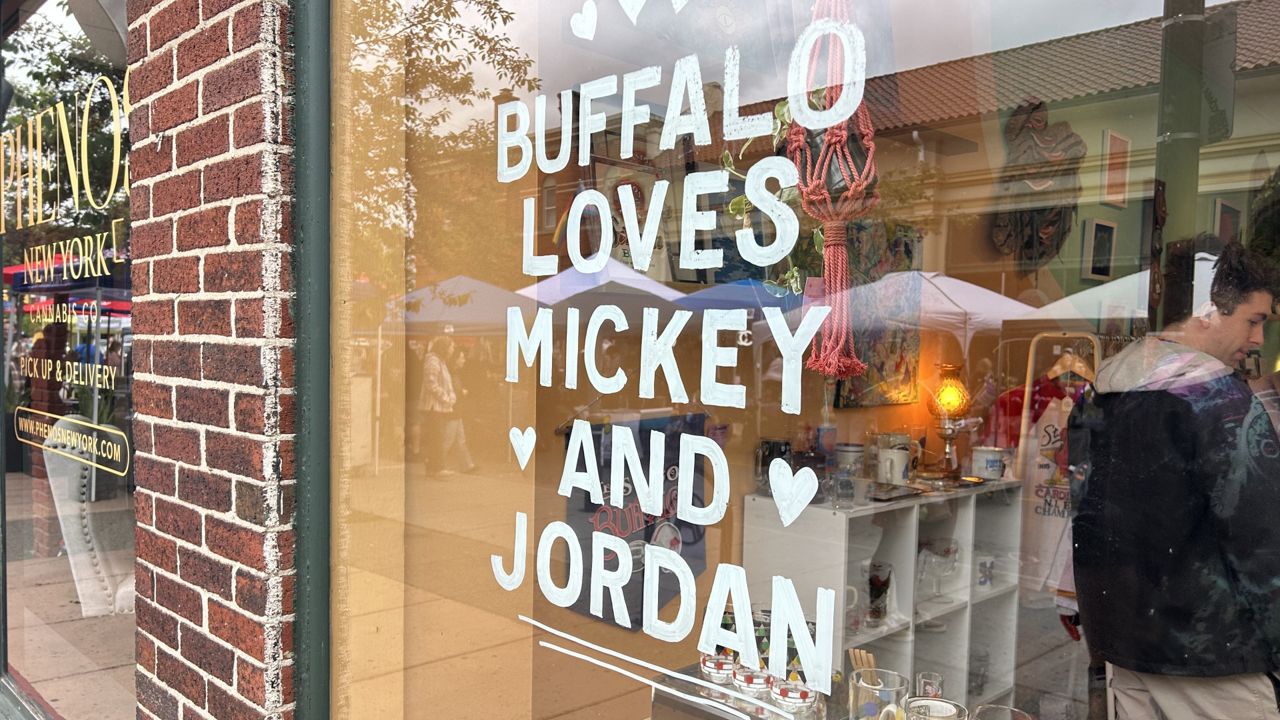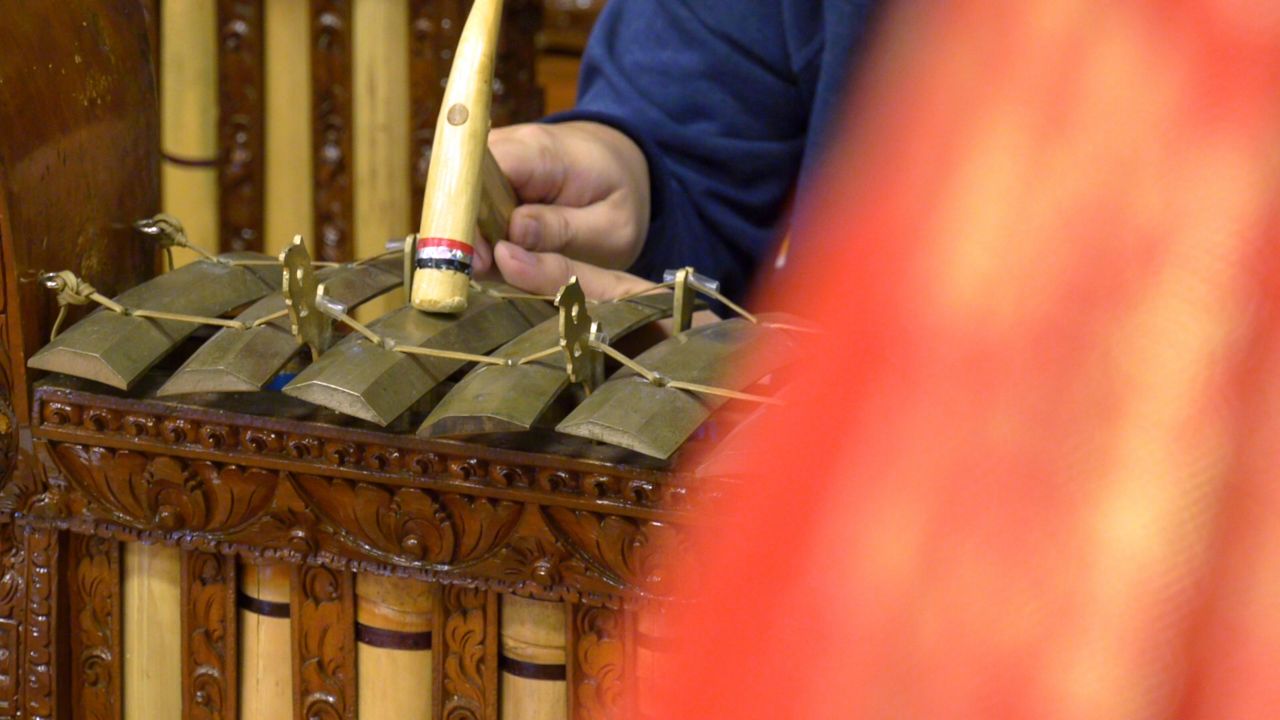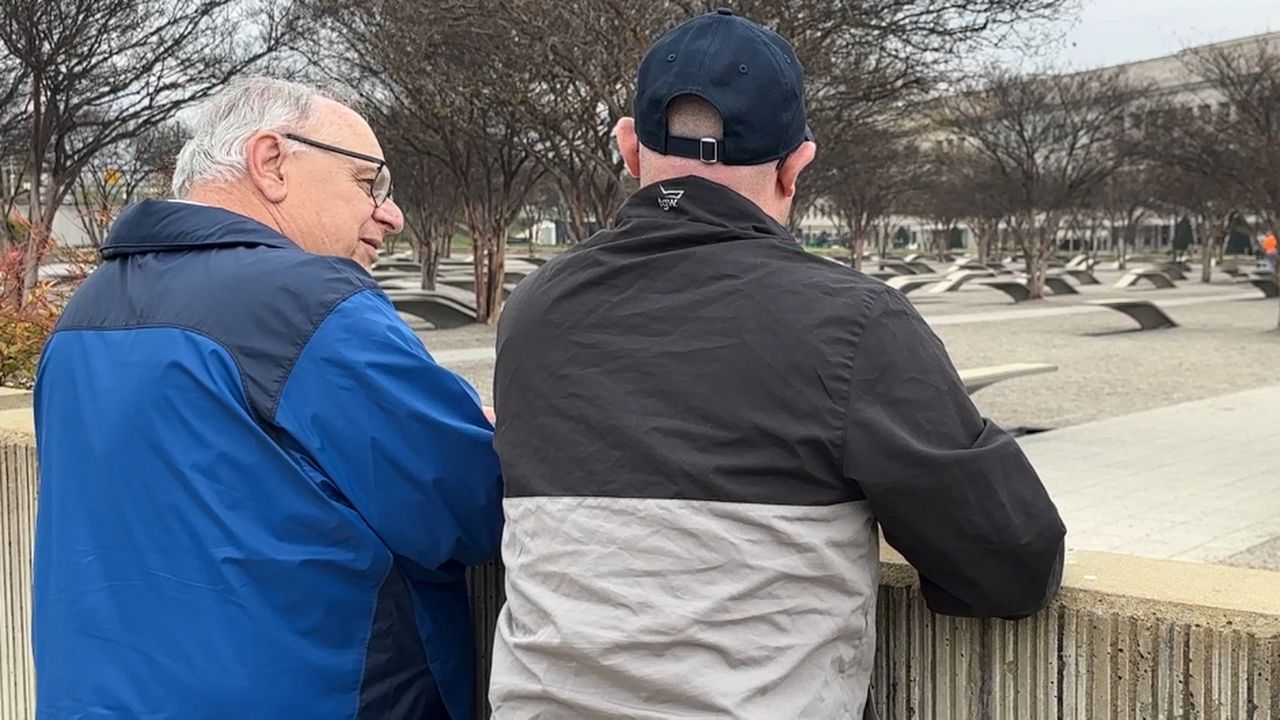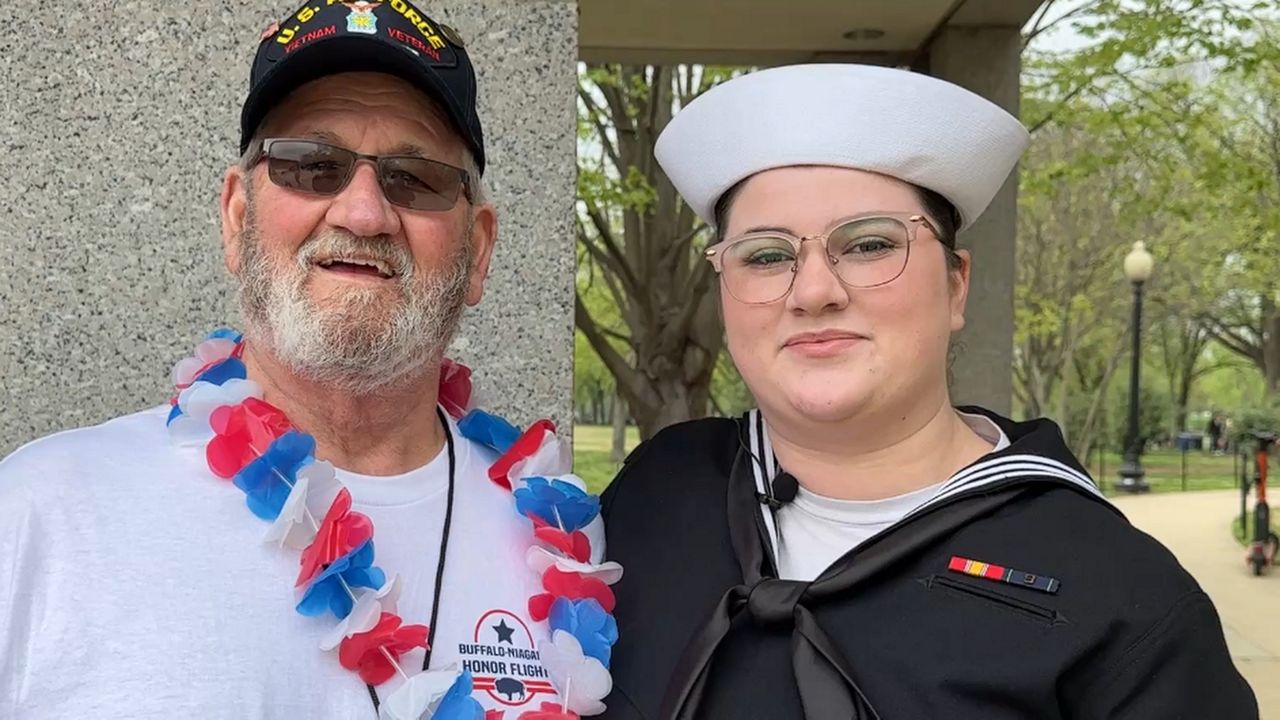BUFFALO, N.Y. — Coming up on two years after a racist massacre in which 10 Black people were killed at a grocery store on the East Side of Buffalo, the fight to keep their memory alive and keep eyes on systemic change continues.
"We search for the words in the music. We sing the same songs at the same time as if they were the gospel," read poet Jillian Hanesworth.
At the Buffalo AKG Art Museum, three powerful Black artists from the city of Buffalo put together an exhibit — but it's not just a reminder.
"We hugged in the streets like old friends, despite the new wounds. We search for the words in the food," Hanesworth continued.
It’s a collection of paintings, poems and pros.
"Really what we tried to do with this was respond to the 5/14 tragedy through the arts," said painter Julia Bottoms.
"Be vulnerable in processing the layers of emotions that come with witnessing such a tragedy," added writer Tiffany Gaines. "But also, how do we find solace in thinking about what healing looks like?"
Making your way into the exhibit space, the first thing written on the wall is a poem entitled 'Finding the words.'
"We are all kind of still searching for how to talk about this," said Hanesworth.
Line by line...
"Thoughts and prayers sailing through the city like air," Hanesworth continued. "We search the breeze, hoping the words would be hidden there."
Bringing visitors back to how this felt almost two years ago.
"Historically, in Black communities, we lean on art when we don't know how to cope with what's happening, to help validate our experiences [and] to help us understand our experiences," Hanesworth added.
The reflections are on full display through the room.
"I keep telling people is the heart of it, whereas the still life work is more of talking about the systemic factors like redlining, food scarcity [and] all those things that kind of led up to the day of the tragedy," said Bottoms.
And this trio, having spent time with families and communities affected, is bringing everyone together again.
"For us to be able to lean on each other, really look to each other for support as we were kind of navigating a really difficult topic, a very heavy sort of subject matter," said Gaines. "I think having one another to lean on, it really made a huge difference in making this all feel possible."
It's a mourning place, that keeps the names of the victims — Ruth, Geraldine, Heyward, Roberta, Aaron, Andre, Celestine, Pearl, Margus and Kat — alive, and keeping the eyes of the community and the nation open.
"I hope that in a way it will be uncomfortable when people come in and kind of spark those difficult conversations," said Bottoms.
"We are worthy of healing and we are worthy of pushing the conversation to incite real, meaningful change so that this doesn't happen again," said Gaines.
"Saying people's names and not just reducing our 10 now ancestors down to 10 moments of silence or 10 people that we think about for three minutes on May 14 every year," said Hanesworth.
"Once the cameras cut off and the commotion quiets, we're left still searching for the words," Hanesworth ends.








